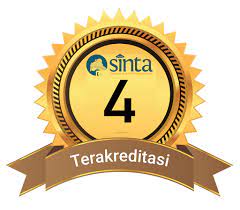Semiotic Analysis of a Public Service Advertising I compost food waste
 :
:
https://doi.org/10.9744/nirmana.19.2.90-97
Keywords:
public service advertising, food waste into compost, semioticAbstract
Most of the current researches on analyzing public service advertisings (PSA) about food waste into compost is concentrated on the interconnection between environmental, economic, and social aspects. This study has considered the semiotic analysis of the selected PSA through Barthes’ The Five Codes theory. Using the semiotic framework, the paper explains the messages of the PSA “I Compost Food Waste” and describes how this advertising provides insight into design innovation. The findings have shown that the PSA combined with the semiotics is capable of raising people’s awareness about food waste into compost.
References
Artero, J. P., Etayo, C., & Sánchez-Tabernero, A. 2016, How Advertising Affects Quality Perception of Public Service Television? A Comparison of Two Surveys in Spain (2008 and 2012), Creative Industries Journal, 9(2), 107-115. doi:10.1080/17510694.2016.1206356
Barthes, R., & Duisit, L. 1975, An Introduction to the Structural Analysis of Narrative, New Literary History, 6(2), 237-272. doi:10.2307/468419
BreatheLife – A Global Campaign for Clean Air. 2018, Retrieved from http://breathelife2030.org/
Calian, K., & Jandali, A. 2015, Compostal is A Bike Operated Compost Pickup Service Operating in New York City. It Is An Easy Way To Send Food Waste To Become Soil Instead Of Going To The Landfill, Retrieved from https://www.kylecalian.com/Compostal
Chen, H. S., & Jai, T. 2018, Waste Less, Enjoy More: Forming A Messaging Campaign And Reducing Food Waste In Restaurants. Journal of Quality Assurance in Hospitality & Tourism, 1-26.
Fish, C. A., Brown, J. R., & Quandt, S. A. 2013, African American and Latino Low Income Families’ Food Shopping Behaviors: Promoting Fruit and Vegetable Consumption and Use of Alternative Healthy Food Options, Journal of Immigrant and Minority Health, 17(2), 498-505. doi:10.1007/s10903-013-9956-8
Grace, C., & Rosenberg, S. 2016, Young, Connected And Black: African-American Millennials Are Driving Social Change and Leading Digital Advancement (pp. 17-18, Rep.), Nielsen.
Gunders, D. 2012, Wasted: How America Is Losing Up to 40 Percent of Its Food from Farm to Fork to Landfill (p. 4, Rep. No. 12-06-B), The Natural Resources Defense Council.
Hengel, J. 2016, Feeding America. Retrieved from http://www.feedingamerica.org/
Highmore, B. 2013, Feeling Our Way: Mood and Cultural Studies. Communication and Critical/Cultural Studies, 10(4), 427-438. doi:10.1080/14791420.2013.840387
BreatheLife. 2018, "I Compost Food Waste." Advertisement. YouTube, https://www.youtube.com/watch?v=jbB5ZpYCQkc.
Jagau, H. L., & Vyrastekova, J. 2017, Behavioral Approach to Food Waste: An Experiment. British Food Journal, 119(4), 882-894. doi:10.1108/bfj-05-2016-0213
Jensen, K. B., & Jankowski, N. W. 1991, A Handbook of Qualitative Methodologies for Mass Communication Research, doi:10.4324/9780203409800
Kull, K., & Maran, T. 2013, Journals of Semiotics in The World. Sign Systems Studies, 41(1). doi:10.12697/sss.2013.41.1.08
Lambin, E. F., & Meyfroidt, P. 2011, Global Land Use Change, Economic Globalization, and The Looming Land Scarcity, Proceedings of the National Academy of Sciences, 108(9), 3465-3472. doi:10.1073/pnas.1100480108
Lee, J., & Davie, W. R. 1997, Audience Recall of AIDS PSAs Among U.S. and International College Students, Journalism & Mass Communication Quarterly, 74(1), 7-22. doi:10.1177/107769909707400102
Lick, E. 2015, Print Advertising in Anglophone and Francophone Canada from A Critical Discourse Analytical Point of View: Establishing Different Relations Between The Producer and Viewer Of Advertisement Images. Visual Communication, 14(2), 221-241. doi:10.1177/1470357214565580
Luque, R., & Clark, J. H. 2013, Valorisation of Food Residues: Waste to Wealth Using Green Chemical Technologies. Sustainable Chemical Processes, 1(1), 10. doi:10.1186/2043-7129-1-10
Metallo, M. 2014, Garden to Table: A 5-Year Look at Food Gardening In America (pp. 8-9, Rep.), National gardening association, Special report
Morone, P. 2016, The Times They Are A-Changing: Making The Transition Toward A Sustainable Economy. Biofuels, Bioproducts and Biorefining, 10(4), 369-377. doi:10.1002/bbb.1647
Murry, J. J., Stam, A., & Lastovicka, J. L. 1996, Paid-Versus Donated - Media Strategies for Public Service Announcement Campaigns, Public Opinion Quarterly, 60(1), 1. doi:10.1086/297737
Papargyropoulou, E., Lozano, R., Steinberger, J. K., Wright, N., & Ujang, Z. B. 2014, The Food Waste Hierarchy As A Framework For The Management Of Food Surplus and Food Waste. Journal of Cleaner Production, 76, 106-115. doi:10.1016/j.jclepro.2014.04.020
Pearson, D., & Perera, A. 2018, Reducing Food Waste. Social Marketing Quarterly, 24(1), 45-57. doi:10.1177/1524500417750830
Pinto, R. S., Pinto, R. M., Melo, F. F., Campos, S. S., & Cordovil, C. M. 2018, A Simple Awareness Campaign to Promote Food Waste Reduction In A University Canteen. Waste Management, 76, 28-38. doi:10.1016/j.wasman.2018.02.044
Price, R., Matthews, J., & Wrigley, C. 2018, Three Narrative Techniques for Engagement and Action in Design-Led Innovation, She Ji: The Journal of Design, Economics, and Innovation, 4(2), 186-201. doi:10.1016/j.sheji.2018.04.001
Rahmanian, N., Ali, S. H., Homayoonfard, M., Ali, N. J., Rehan, M., Sadef, Y., & Nizami, A. S. 2015, Analysis of Physiochemical Parameters to Evaluate the Drinking Water Quality in the State of Perak, Malaysia, Journal of Chemistry, 1-10. doi:10.1155/2015/716125
Raineri, M. 2017, The Community Grounds Project, Retrieved from https://www.thecommunitygroundsproject.com/
Stano, S. 2016, Introduction: Semiotics of Food. Semiotica, 2016(211), 211-211. doi:10.1515/sem-2016-0095
Stein, S. R. 1998, Visuality and the Image. Journal of Communication, 48(2), 170-177. doi:10.1111/j.1460-2466.1998.tb02755.x
Downloads
Published
How to Cite
Issue
Section
License
- Jurnal Desain Komunikasi Visual Nirmana has the right of first publication while the author(s) retains copyright and the right to share and redistribute the work under a Creative Commons Attribution License. This license allows others to freely share and adapt the work, provided that they acknowledge the work's authorship and its initial publication in this journal.
- Upon publication, the author(s) agrees to the journal's terms of non-exclusive distribution, allowing the published version of the work to be used in other contexts (e.g., institutional repository or a book), with an acknowledgment of its initial publication in Jurnal Desain Komunikasi Visual Nirmana.
- The author(s) is also aware of the responsibility to obtain permission for the use of any copyrighted material from third parties as required by the journal.















